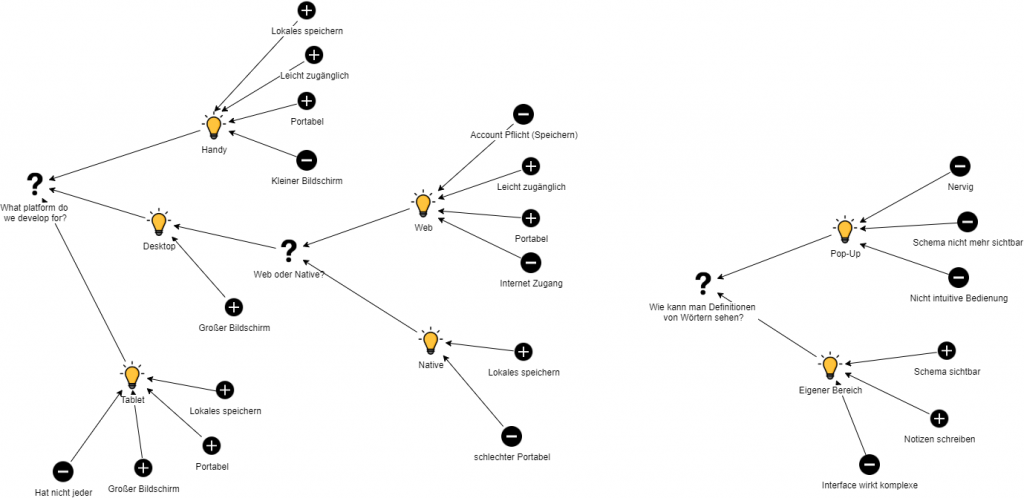(1) Summarize the feedback you received regarding your storyboard.
Our group has received two major feedback points. One was about the platform we develop for and the other was about looking up definitions about certain words. We previously had in mind to develop an app for a phone since this is the most accessible platform for every student. But the feedback showed us that using PDF’s on phones is not very enjoyable and our persona allows a more expensive device. That’s why we started a discussion about the platform. We used the gIBIS technique in task 3 to get a better answer to this question. The other feedback was about looking up definitions. We haven’t really thought about that in our storyboard. That’s why we also discussed how we want to show definitions with the gIBIS technique.
(2) Develop an interactive paper prototype.
We had a look on our sketches and the storyboard and transfered our ideas to our low-fidelity prototype. Therefore, the prototype looks quite similar to our storyboard, except that it’s designed for desktop now.
The prototype fulfills the use case of creating a dynamic scheme by answering several questions about the legal case. We did not made a prototype for the other use case of creating this scheme manually without guidance. We think that the important feature of our application is the guided scheme creation because this solution would save the student the most time.
We used figma since it is easy to use, free and does its job quite well. The strength of our prototype is that it fits our imagination of the application quite well. However, we did not think about exception handling within our prototype for the case that the user input is different of what we expect.
Link to our prototype: https://www.figma.com/proto/xNynXhTPlGvthxMG2es7nC/JuurMate?node-id=19%3A4&scaling=scale-down&page-id=0%3A1
(3) Design rationales
As already explained in task 1, we used the gIBIS technique to answer our two questions. We think using the gIBIS technique it’s easy to think about a questions which seperates in sub questions and which has distinctive advantages and disadvantages.

Refelxion
Who made what contribution?
Anil summirized the feedback we got for task 1. Tobias made the low-fidelity prototype for task 2. We all together did task 3 and talked about the low-fidelity prototype. I did the blog post in the end.
What did you learn?
We had a look onto the different tools for low-fidelity prototyping. Additionally, we reviewed QOS and gIBIS model for answering our questions we had after the feedback. We were surprised that pen and paper prototyping as we did for the storyboard is quite helpful to create a low-fidelity prototype afterwards.
What went well?
Everything went quite well. Nothing to complain about.
What would you like to improve?
There is nothing specifically we could improve currently.

